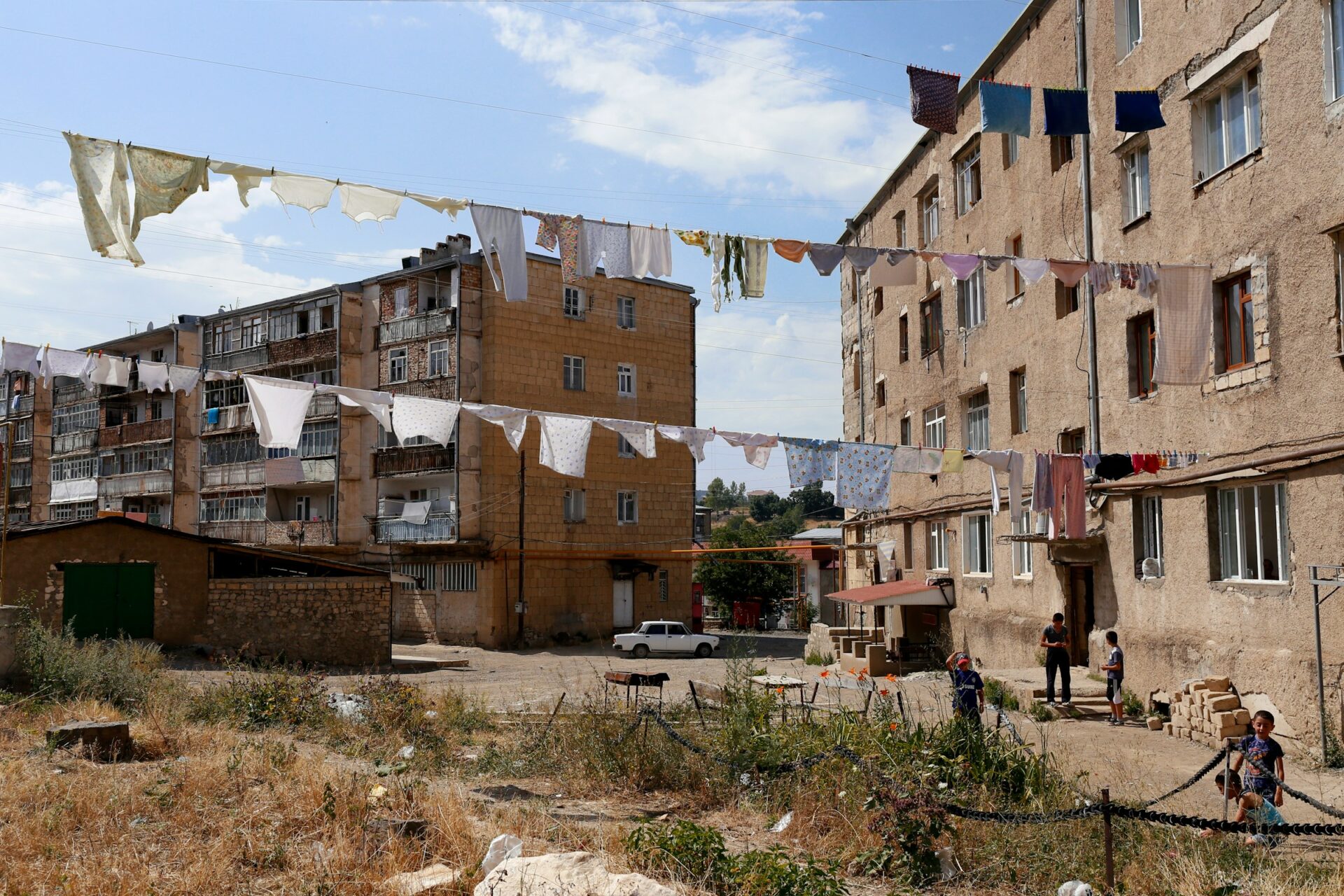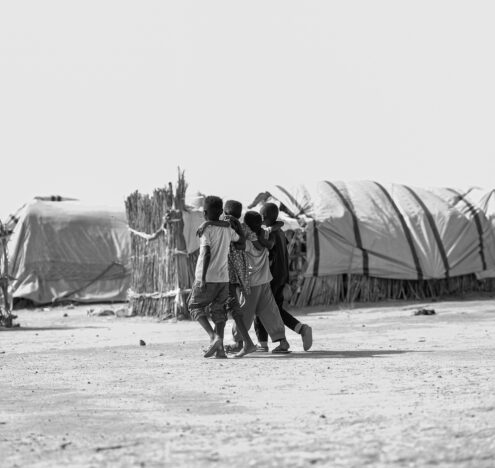The most significant escalation across the Armenia-Azerbaijan border since the September 2023 military takeover of Nagorno-Karabakh by Azerbaijan occurred on the morning of Feb. 13, leading to the death of four Armenian soldiers. The violence came just days after Azerbaijani President Ilham Aliyev was reelected with more than 90% of the vote in the country’s “boringest” election ever. The lingering uncertainty over Armenia-Azerbaijan negotiations and the continuing threat of renewed violence demands US attention and a coherent policy towards the South Caucasus.
Russia’s invasion of Ukraine in February 2022 brought the post-Soviet space back to the forefront of US foreign and security policy. To counter Moscow, the US and its allies imposed sanctions against Russia coupled with military and economic support to Ukraine. As part of the broader strategy of harming Russia’s influence, the US has focused its attention on other areas of the former Soviet space such as Central Asia, the South Caucasus, and Moldova. The South Caucasus is a uniquely situated geostrategic region nestled between Russia, Iran, and Turkey — and thus a growingly coveted transit hub connecting Europe, Asia, Russia, and the Middle East.
Competing Interests
Since the collapse of the Soviet Union, the South Caucasus has been a region of several ethnopolitical conflicts — Abkhazia, Nagorno–Karabakh, and South Ossetia. Russia mediated ceasefire agreements in all three regions in the early 1990s, and they began to be described as “frozen” and “protracted” conflicts.
In its efforts to decrease post-Soviet Russian influence, the US helped to facilitate the creation of the Azerbaijan–Georgia–Turkey strategic partnership and supported the launch of the Baku–Tbilisi–Ceyhan oil and Baku–Tbilisi–Erzurum gas pipelines, which transported Azerbaijani oil and gas to international markets circumventing both Russia and Iran. The US also supported the launch of the “Southern Gas Corridor,” a project to bring additional Azerbaijani gas to Europe.
At the same time, Armenia established a military alliance with Russia, hosted a Russian military base and border troops, and eventually joined the Collective Security Treaty Organization (CSTO) and Eurasian Economic Union (EAEU).
Transformation in the South Caucasus
Beginning in the mid-2010s, the regional security architecture of the South Caucasus entered a phase of transformation. The key driver was Turkey’s policy to achieve strategic autonomy and become an independent regional power. Russia viewed this approach as an opportunity to weaken Turkey-US and Turkey-NATO ties. The subsequent and evolving Russia–Turkey partnership has impacted the regional security architecture of the South Caucasus, and continues doing so to this day.
Another factor of the changing regional dynamics was the growing military strength of Azerbaijan due to the rainfall of oil and gas money.
These factors, coupled with the lack of strategic thinking of successive governments of Armenia, which failed to understand the changing nature of regional geopolitics, paved the way for the 2020 Nagorno-Karabakh War that Azerbaijan launched. The defeat in that war significantly weakened Armenia’s position and transformed the self-proclaimed Nagorno-Karabakh Republic into a nonviable entity under Russian protection while increasing Turkey’s influence in Azerbaijan and making Baku a de facto regional hegemon.
The South Caucasus is a uniquely situated geostrategic region nestled between Russia, Iran, and Turkey — and thus a growingly coveted transit hub connecting Europe, Asia, Russia, and the Middle East.
Russia’s invasion of Ukraine has limited its ability to allocate the necessary resources to the South Caucasus and increased the importance of Azerbaijan and Turkey for Moscow. Russia uses Azerbaijan for direct land access to Iran and to South East Asia, while both Azerbaijan and Turkey support Russia in circumventing Western sanctions. While Armenia recognized Nagorno-Karabakh as part of Azerbaijan in October 2022, hoping that it would pave the way for normalization with Azerbaijan and then Turkey, Russia proved unwilling or unable to protect Nagorno-Karabakh from Azerbaijani military attacks contrary to the general understanding of the Russian peacekeepers’ mission following the Nov. 9, 2020 Trilateral Statement. However, after a 10-month blockade by Azerbaijan cutting the civilians from the outside world, and despite orders by the International Court of Justice to reopen the Lachin corridor connecting Nagorno-Karabakh to Armenia, Baku — with Russian peacekeepers acting as bystanders — used this strategic opening for a military takeover of Nagorno-Karabakh in September 2023 thereby forcing over 100,000 Armenians to leave the area. Furthermore, the CSTO and Russia failed to meet Yerevan’s security expectations when Azerbaijan launched multiple assaults on Armenia proper throughout 2021-2022.
In current circumstances, Russia understands that it lacks the resources to control the region alone and believes that the tangible way to secure its role in the South Caucasus is to coordinate its policy with the other regional powers — Turkey and Iran. The launch of the 3+2 platform (Russia, Turkey, Iran, Armenia, Azerbaijan) serves this goal.
After closing “the Nagorno-Karabakh chapter by force,” Baku disengaged from Brussels- and Washington-facilitated platforms of Armenia–Azerbaijan negotiations, instead insisting on bilateral talks. On Dec. 7, 2023, Yerevan and Baku reached a limited bilateral agreement that included the exchange of some POWs. On Jan. 31, 2024, the Armenia-Azerbaijan commission on delimitation and demarcation met on the Armenia-Azerbaijan border and more bilateral negotiations are anticipated. However, according to the Armenian minister of foreign affairs, there are certain setbacks by Azerbaijan in negotiations.
US Efforts
Since February 2022, the US appears to have concentrated its efforts on reducing Russia’s influence and presence in the South Caucasus through the pursuit of a peace agreement between Yerevan and Baku facilitated by Brussels and Washington. As Armenia serves as Russia’s primary power base in the region, it seemed that the quickest way to decrease the latter’s influence was to support Yerevan in moving away from Moscow. On the premise that Armenia initially chose Russia as an ally to counter Azerbaijan and Turkey, the Armenia-Azerbaijan and Armenia-Turkey normalization processes appeared the most efficient way to encourage Armenia’s foreign policy shift and to “take some distance,” as one NATO representative phrased it, from Russia.
The potential decoupling of Armenia from Russia was likely one of the driving factors for Washington’s active involvement in the negotiation process in 2022-2023, including the organization of two Ministers of Foreign Affairs summits in Washington in May and June 2023. Following this logic, the US should continue to increase its efforts to facilitate a peace agreement between Armenia and Azerbaijan this year at any cost, hoping that it will pave the way for Armenia to substantially decrease its reliance on Russia.
However, the decrease of Russian influence in the region and the weakening of the Armenia–Russia alliance are not ends in and of themselves. The strategic interest of the US has been to have a stable South Caucasus, that can serve as a transit for energy and cargo flows between Asia and Europe, circumventing Russian and Iranian territory. However, efforts aimed at encouraging Armenia’s drift away from Russia contradicts this goal. Any legal steps by Yerevan to move away from Russia (withdrawing from the CSTO or EAEU, or ending the deployment of the Russian military base or border troops in Armenia) will trigger a harsh response from Russia, which would likely destabilize the region and move it further away from Western prospects.
If this were to happen, Russia may use a variety of coercive measures against Armenia, including economic pressure on Armenia’s strategic sectors under its control and even seeking to trigger new Azerbaijani military attacks. Azerbaijan and Turkey may exploit the Russia-Armenia confrontation by seeking the establishment of an extraterritorial land corridor between Azerbaijan and Turkey via Armenia by force. This itself may trigger a tough Iranian response, which views any additional increase in Turkey’s role in the region with great suspicion. The destabilization of Armenia, and potential military flare ups will destabilize the region as a whole.
Azerbaijan’s Expanding Demands
Meanwhile, Azerbaijan puts more demands on Armenia to reach the peace deal. President Aliyev, elaborating on his earlier comments from 2021, recently stated that by “changing Armenia’s constitution and other documents, peace could be achieved.”
This is a continuation of Azerbaijan’s policy, backed by the threat of use (or real use) of force, that pushes Yerevan to pursue appeasement with the hopes of securing an elusive peace treaty. However, an appeasement policy towards Azerbaijan only encourages Baku to put forward additional demands to Armenia, making the signature of the peace deal less and less likely. At the end of the day, in face of growing Azerbaijan’s assertiveness and limited diplomatic efforts from the West, Armenia may be forced to look to Russia (again) and Iran as hard power deterrent factors.
Given these uncomfortable realities, the US should reevaluate its objectives in the South Caucasus and the role of the Armenia-Azerbaijan conflict in achieving them. This by no means suggests that Washington should forego its engagement in the region or its expanding relations with Armenia.
Still, it does mean that the US must recognize that a policy that encourages Armenia to move away from Russia through the blind pursuit of peace with Azerbaijan and normalization with Turkey by any means is likely to provoke further instability in the South Caucasus.
Alas, Armenia cannot rely on Washington in the event of a worst case scenario: The US has already made clear in Georgia and Ukraine it is not willing to risk American lives for the territorial integrity or security of these former Soviet states. Instead, the US would be better served by supporting Armenia as it seeks to diversify its foreign and security policy without antagonizing Russia and appeasing Azerbaijan. The US also should pressure Azerbaijan to prevent new attacks against Armenia and make more efforts to convince Turkey to restart the normalization process with Armenia without preconditions. This policy will also reap dividends for Washington and its allies.




















